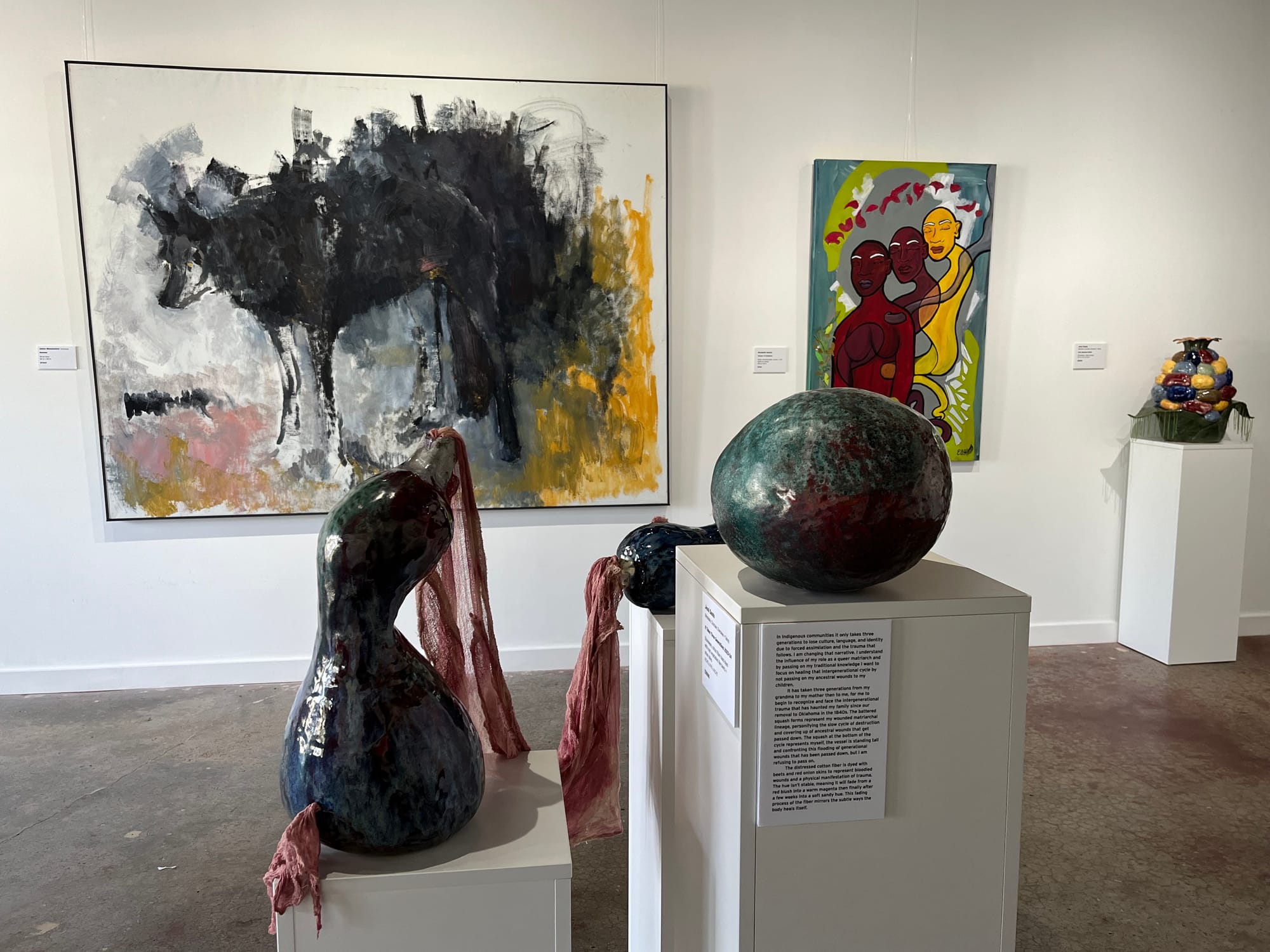Four Mothers Collective: Ripple In Traditions
Positive Space Tulsa
Through November 23, 2024
We sometimes think of traditions as static things—unchanging customs or rituals passed down from generation to generation, usually tied to a rite of passage or a notable date. These actions hold familiarity and comfort for some and stress for others (let’s not discuss my family’s response one Christmas when I changed that vintage green bean casserole recipe). Often we just do them by rote, by passive repetition, with little memory of how they started, what they’re supposed to represent, or how they actually connect people across the years.
But what if we thought about traditions as active, living things—less like ossified forms and more like natural organisms? What if, as the curators of the current exhibit at Positive Space suggest, they ripple?
For “Ripple in Traditions,” the Indigenous-led Four Mothers Collective brought together works by 20 multigenerational BIPOC women and 2-Spirit artists that meditate on tradition as a process of live transmission. “With the concept of the ripple effect, traditions echo through time,” reads the Collective’s statement about the show. “Their impact evolves, while their origins remain the same. Each piece of art is a narrative carrying ancestral wisdom, customs and heritage forward to the next generation.” Like DNA itself, the creative act bears its own lineage forward, even as that lineage shifts within its new incarnation.
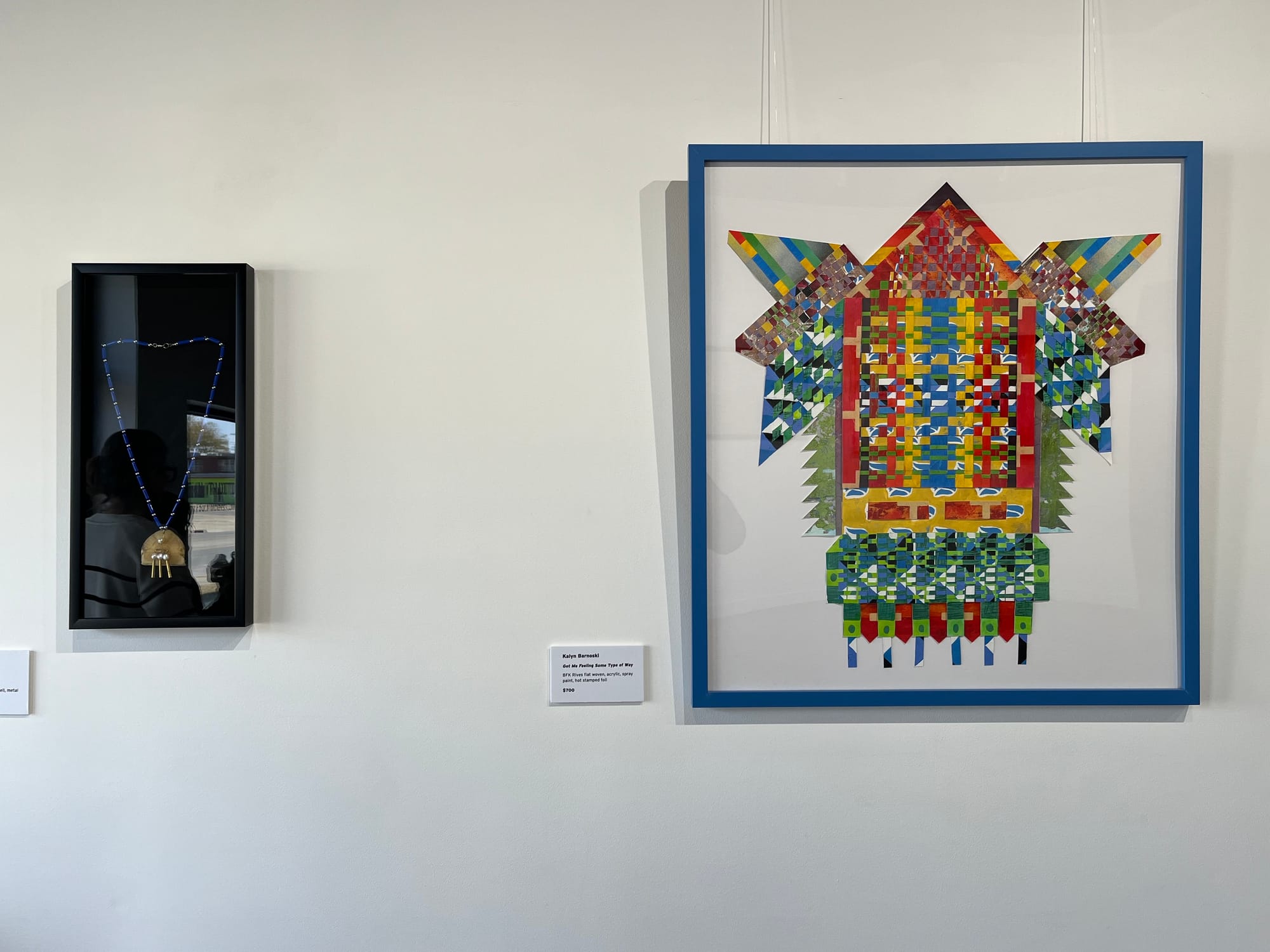
Curated by Carly Treece, Rae Riggs and Brittany Bendabout, the pieces in this exhibit allow the dimensions of “what gets passed down” to become more mobile, more expansive. On one wall, a necklace by Bradley Dry—made from pearls, turtle shell, metal and glass—feels like a gift from the depths of the sea. Next to it hangs a paper weaving by Kalyn Barnoski, created during an artist residency a few years ago and brought to new life here: a strong form that sizzles inside with texture and pattern. Anchoring that wall with soft, urgent brushstrokes is the giant yet gentle wolf in Jaime Misenheimer’s Nashoba (the word means “wolf” in Choctaw). The black shadow it half-stands in is neither the beginning nor the end of its story. A swath of deep yellow behind the darkness comes through in the color of its eyes, as it looks forward into a patch of ground that links the black and the yellow with a new shade: a soft bloom of rose.
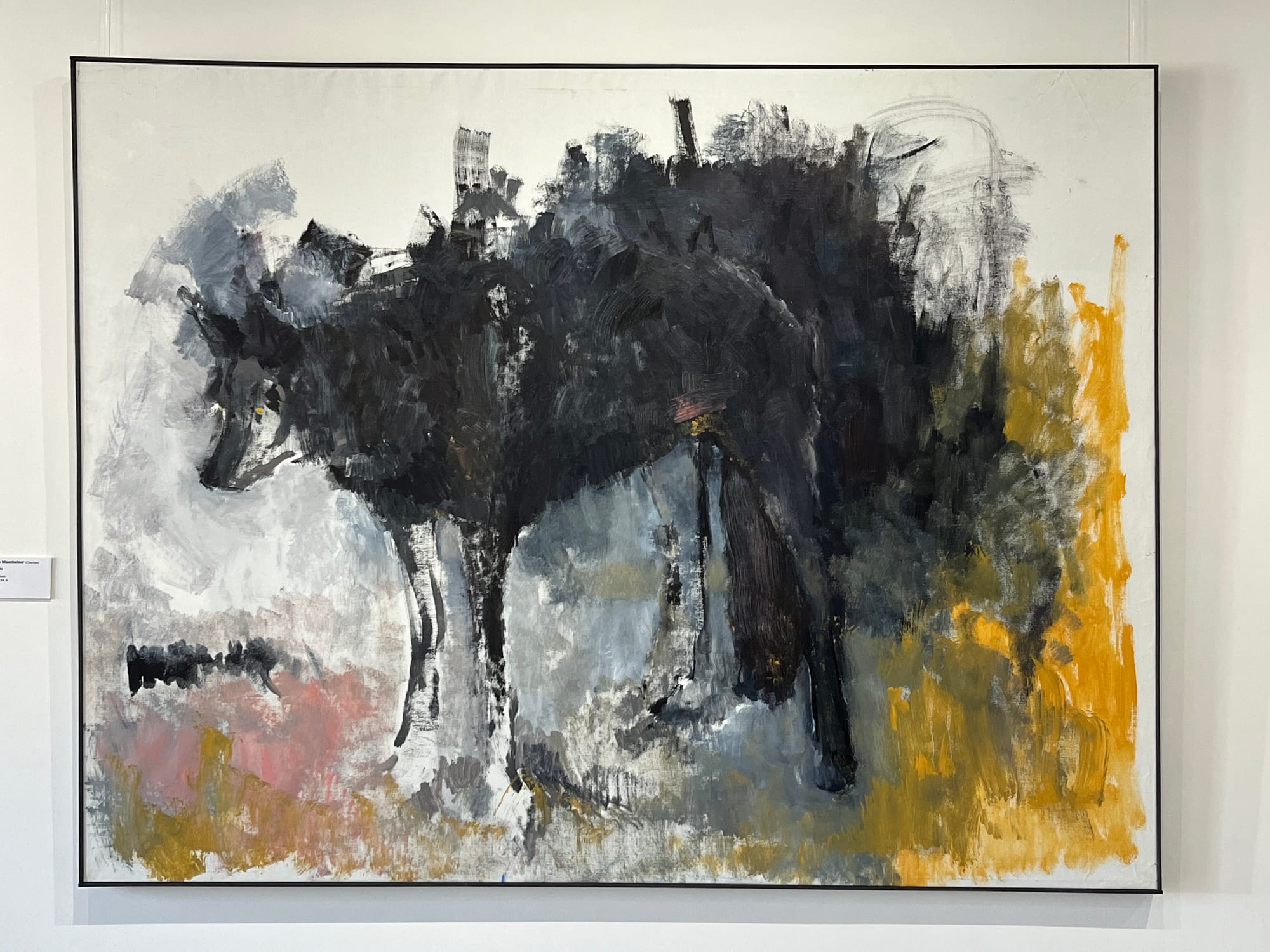
Across the room, two works by Dana Tiger hang side by side. One, a painting called Seven Women Ride In Stressful Times, is a riot of color and movement on a pale yellow background. The other is a quiet, spare drawing of Tiger’s daughter (who also has a piece in this show) breastfeeding her baby; the wall text notes that the drawing is made with charcoal from Tiger’s own fire. Mother and son are positioned on the right side of the frame with a large empty space in front of them, as if sitting with invisible generations yet to come. Surrounding these pieces are portraits of individual women—like watchers, guardians, protectors—who are no less part of the story for standing solo.
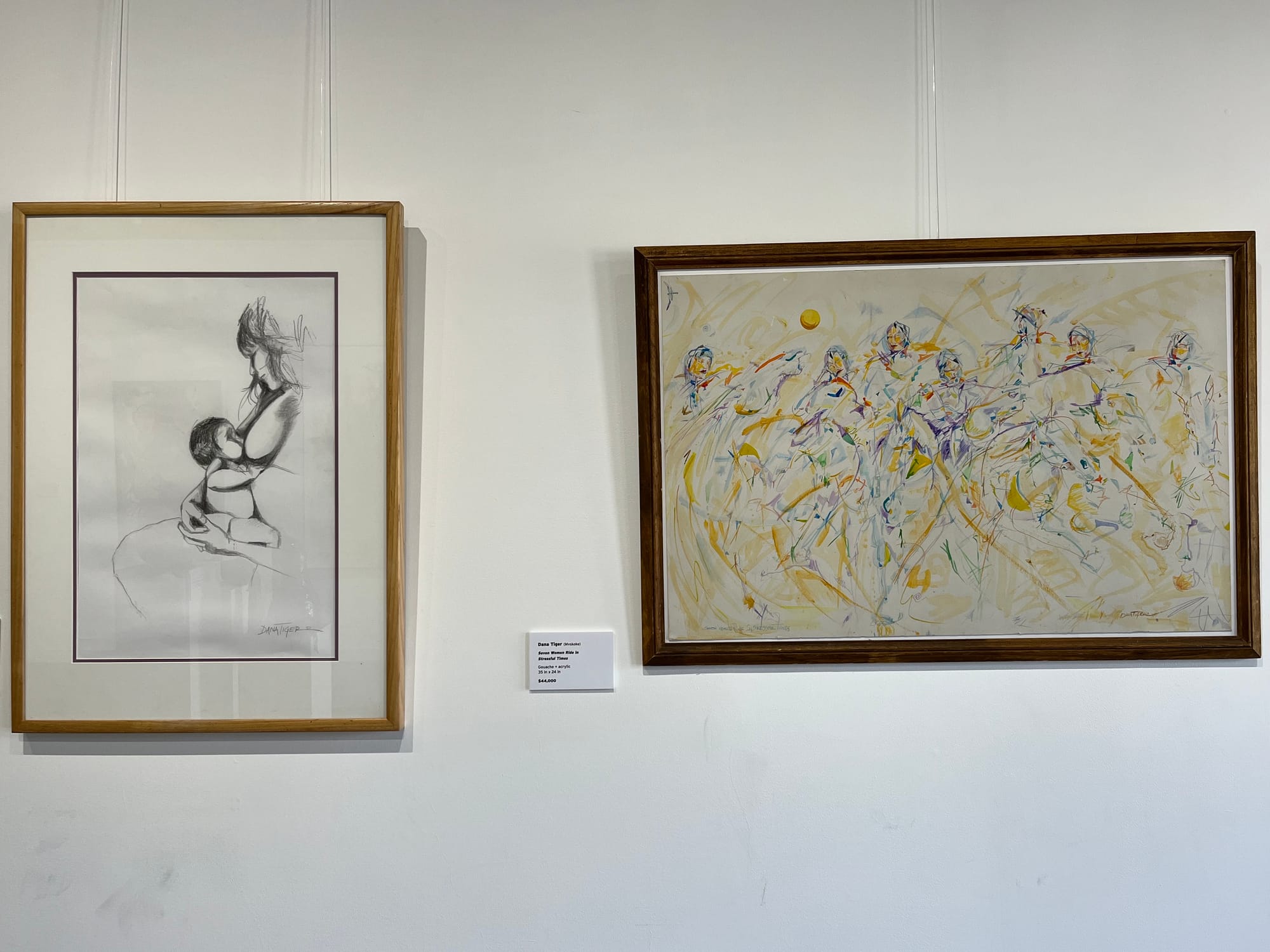
Fire cycles play a part in Raelee Fourkiller’s work, too. Below a six-panel collage, next to a typewritten manuscript that blends hard-hitting personal stories with poetic meditations, a cylinder holds ash that viewers are invited to touch and place on passages that resonate with them. “Is it a straight line from breath to cessation,” Fourkiller asks, “or do our bodies offer more—multitudes buried in our veins, our thoughts, our ways of being? … Those that pass do not leave, in flesh they die, but in memory—they live to create you…. Through this work, I explore the Cherokee worldview of time as a continuous flow, where past, present, and future coexist.”
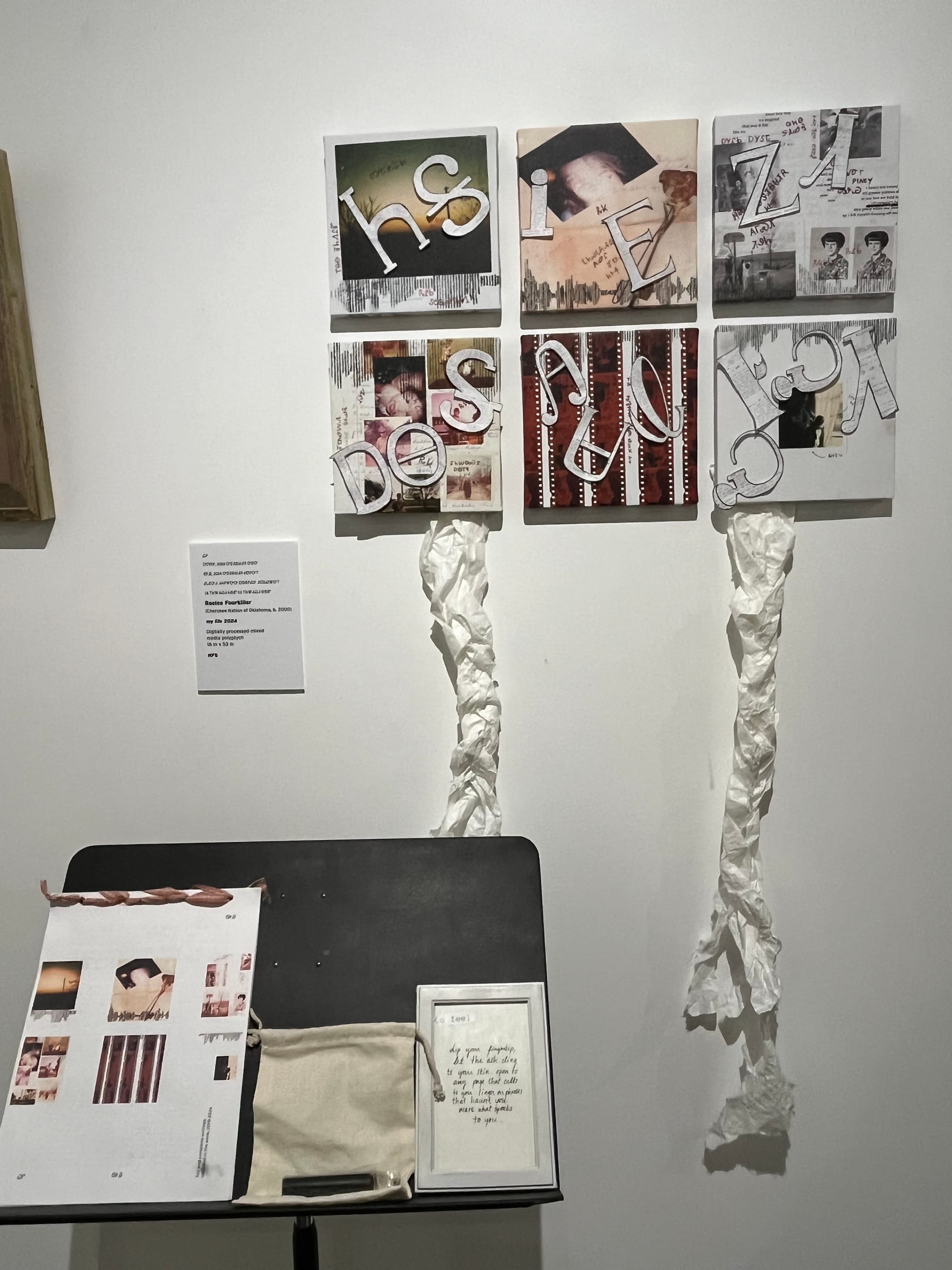
In the center of the gallery, a piece by Jessi Sands pulls many of the exhibit’s thematic strands into a unified form. Threaded through a series of stoneware vessels on close-set pedestals, a cloth dyed with root vegetables becomes a weave of memory, an umbilical cord, a visceral legacy of trauma and healing whose “continuous flow” is neither beautiful nor ugly but simply real. The cloth is rough, yet delicate; it looks both pulled and spilled. The thickly glazed sculptures remind me of organs, gourds, wombs. The piece is called It Takes Three Generations—a reference, Sands writes, both to the time it takes in Indigenous communities “to lose culture, language, and identity due to forced assimilation and the trauma that follows,” and to the time it has taken to start healing those wounds in their own family. It’s one of the strongest visualizations I’ve ever seen of the interconnection between one’s ancestors and oneself.
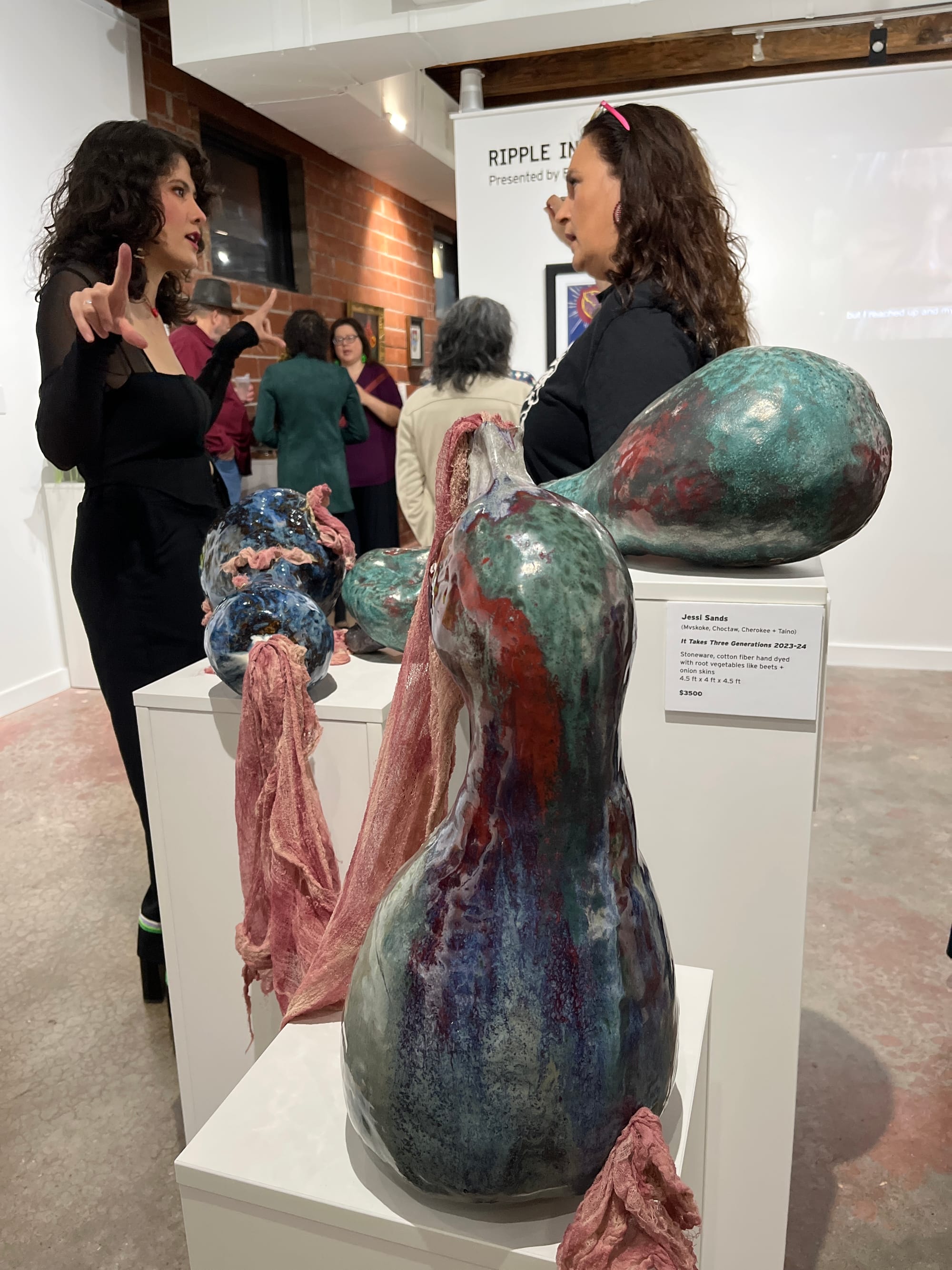
From the earrings by Okcate Smith McCommas at the front of the space to Carly Treece’s homage to Joan Hill’s Women’s Voices At The Council at the back, the works in “Ripple in Traditions” are about traditions—and since art-making is itself a transmission, a creative act that moves outward, they are traditions. Even the opening reception for the show resonated with these themes, as viewers (from toddlers to elders, some having traveled hours to be there) received the ripples these pieces made. I overheard more than one person in the packed room expressing a sense of kinship with a piece through shared memory.
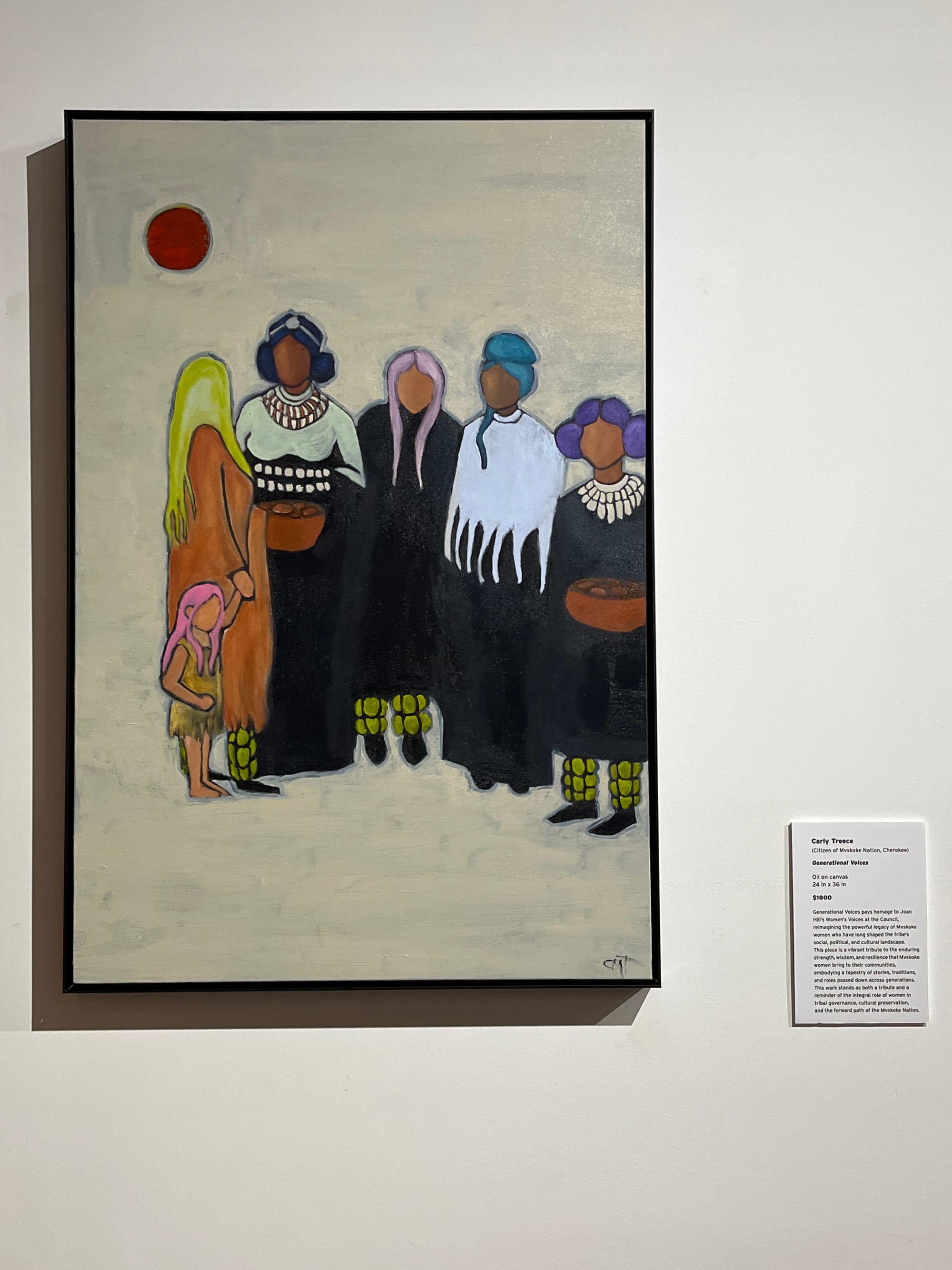
The mission of Four Mothers Collective is to expand access to resources, professional development opportunities, and platforms for showcasing work for BIPOC women, girls and 2-Spirit relatives who often face barriers in the art world. When a gallery opening feels as warm and full of truth-telling love as this one did, the curators have done a job that goes far beyond choosing and hanging art. They’ve opened a pathway for a life force that wants to keep flowing.
